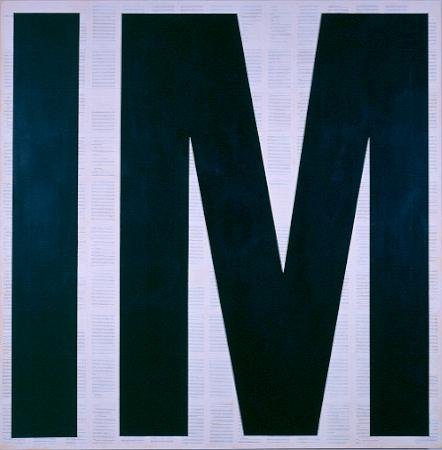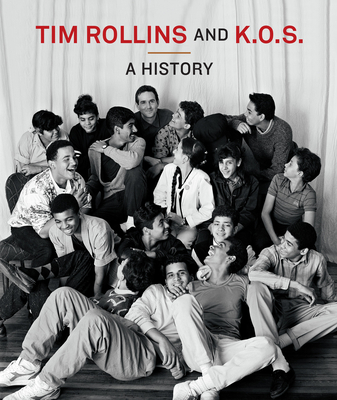I have the distinguished honor of needling in on the "Fine Art" portion of this blog this time. The other day I went to the Frye Art Museum, located in the flamboyant and hipster-laden Capitol Hill portion of Seattle. This museum is always great, and always free. Upon entering, you encounter a movie playing before you can even hope to see any art. This was planned. I had the distinct urge to move on. That urge was stupid and I accomplished a very parental chastisement of this urge later on in the day. I watched the whole thing. It was longish and I was standing the entire time, but it was good. I nearly cried on two occasions, but as I looked around at some of the art people, they seemed stoic and rigid and their faces didn't even attempt at tears, so I sucked it into a ball in my stomach to wait patiently for my inevitable nervous breakdown years from now.
The show was called "Tim Rollins and K.O.S.: A History." Tim Rollins started what he called the "Art and Knowledge Workshop" in South Bronx, a place known for its poverty and violence, for at-risk kids who called themselves "Kids of Survival" or K.O.S. The idea was to read important literature (see where I come in here) and make art from its seeded themes. The film concerned a specific group of these at-risk kids, who would cycle through as they moved on to (hopefully) bigger and better things. With each book, they would take every page and paste them in order on the canvas. That was almost always the foundation. Tim was rough with the kids in a way that worked. He held them responsible for their own education, an education the he helped them achieve. I won't give away what happens or why I could have cried. If you can, go see it yourself (as this blog demands).
So, swallowing the intensity of the movie and shaking my legs out, I finally entered the art portion of the museum. This is where I realized how important it was that I saw that film. All these pieces which were given such thick histories involving the kids and their struggles were on display. Seeing all of it firsthand was amazing. Considering everything — the education, the synthesis between art and literature, the buoyancy it gave to their futures — I was moved. These pieces had a wonderful fourth dimension, meaning they weren't merely stretchers, canvas, print and paint, but also carried the weight of emotion and history, moved across time. These kids are now adults with something to show for their struggle.
Their pieces are part of many public collections including the Museum of Modern Art in New York, the Hirshhorn Museum and Sculpture Garden in Washington, D.C., the Museum of Fine Arts in Boston, and the Tate Gallery in London amongst others. They have also had many exhibitions all over the world and now including the Frye in Seattle. See it. It is worth it.

A Midsummer Night’s Dream XVII (after William Shakespeare), 2001
watercolor, fruit juice, aquaba paper, collage, mustard seed, xerography, rag paper on canvas
106.7 x 122 cm

The Scarlet Letter – The Prison Door (after Nathaniel Hawthorne), 1992-93
Acrylic and book pages on linen
54 1/8 x 77 3/16 x 1 3/4 "

Invisible Man (after Ralph Ellison), 2008
Matte acrylic and book pages on canvas
72 x 72 inches

The book, published by MIT Press



No comments:
Post a Comment